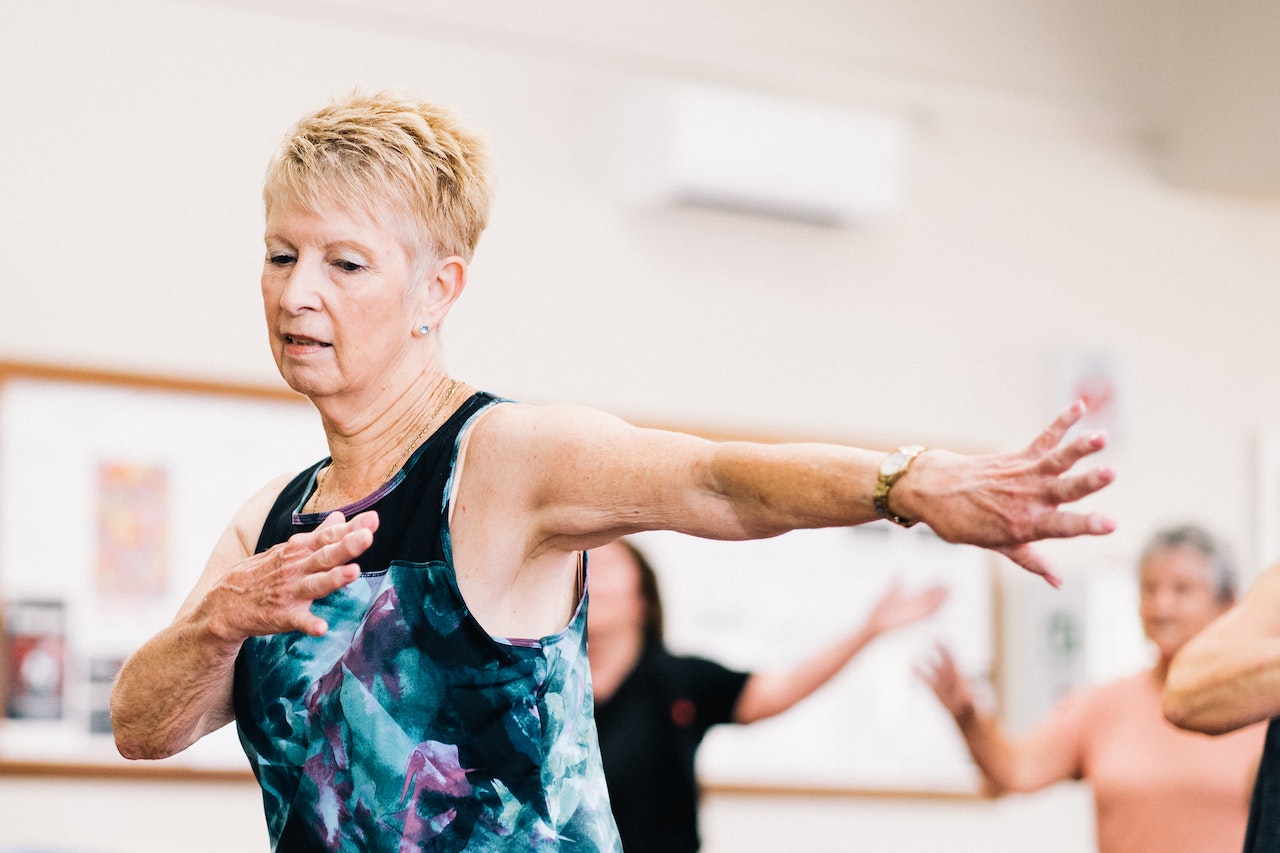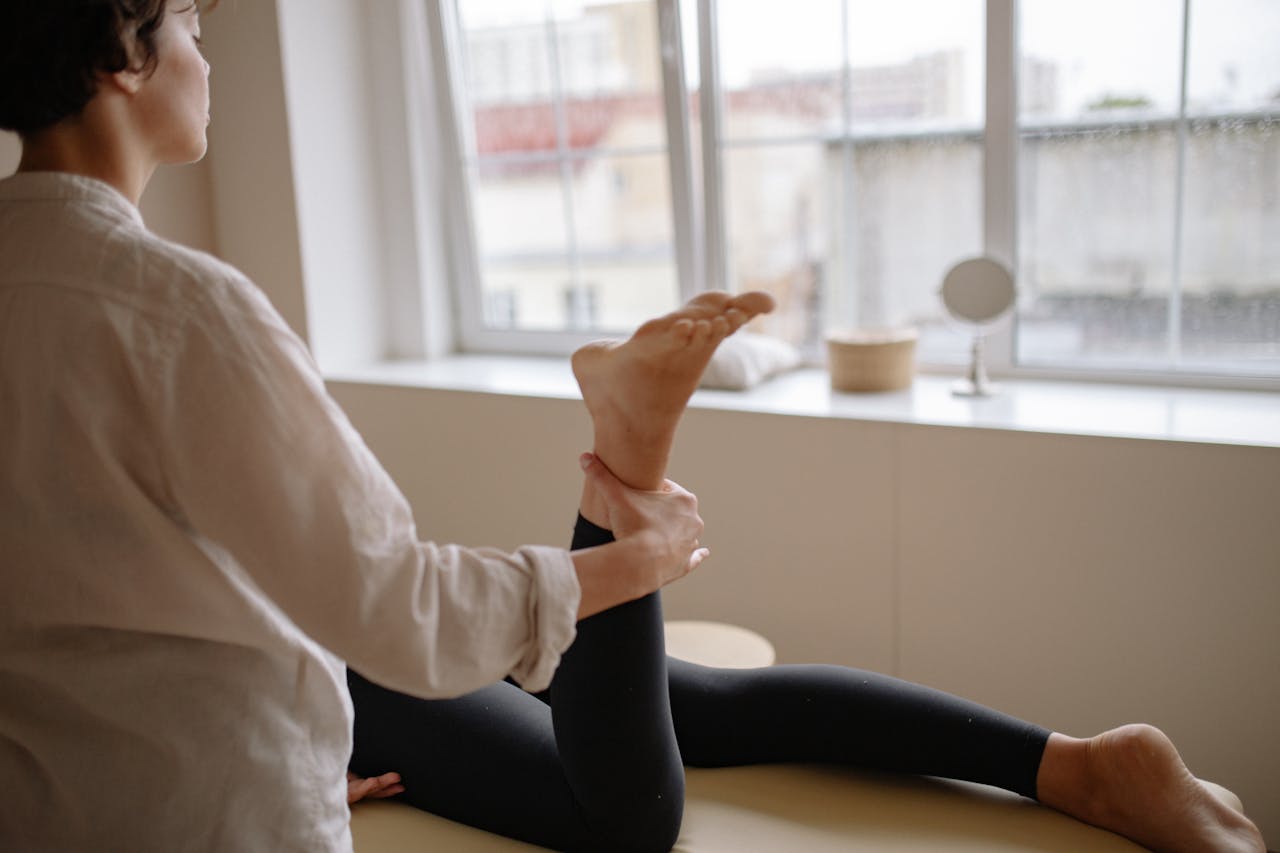Cardiac health is considered one of the strongest indicators of longevity and Cardiovascular disease is one of the leading causes of premature death and incapacitation across the world. Cardiac Rehabilitation (CR) is a medically supervised program that helps people recover from a heart attack, heart surgery, and other heart-related conditions. The goal of cardiac rehabilitation is to help patients return to physical and psychological normality, improve their physical fitness, reduce the risk of future heart problems, and enhance their overall quality of life.
Home-based cardiac rehabilitation (HBCR) programs are designed to deliver CR exercises in the comfort of patients’ homes, offering a convenient and effective alternative to traditional center-based CR programs. In this article, we explore the purpose and significance of HBCR programs, including the main components of a typical program, and how HBCR differs from regular physical therapy.
What is a cardiac home exercise program?
Often prescribed by a healthcare provider or a cardiac rehabilitation specialist, a cardiac home exercise program is a set of physical exercises designed to improve the cardiovascular health of individuals who have experienced heart-related health issues or are at risk of developing such problems. The exercises can be performed at home with minimal equipment. It is a supervised program that involves a combination of aerobic exercises, strength training, and flexibility exercises tailored to the individual’s specific needs and health status. The goal of cardiac home exercise programs is to improve heart function, lower blood pressure, and cholesterol levels, and increase overall fitness levels. Regular participation in a cardiac home exercise program can lead to improved heart health, decreased risk of future heart problems, and overall improved quality of life.

Who can benefit from cardiac rehabilitation exercises at home?
HBCR programs are typically prescribed for patients who have had a heart attack, heart surgery, or other heart-related condition, such as stable angina or heart failure. These patients often have to deal with various physical and emotional challenges, including chest pain, shortness of breath, anxiety, depression, and reduced physical fitness. HBCR programs can help recovering patients overcome these challenges by providing them with personalized exercise plans, dietary advice, and stress management techniques, as well as educating them on heart-healthy lifestyles and habits.
Apart from individuals who have experienced heart-related health problems, such as a heart attack, coronary artery bypass surgery, or heart failure, cardiac rehab exercises at home can benefit individuals who are at risk of developing cardiovascular disease due to factors such as high blood pressure, high cholesterol, or obesity. In general, anyone with a cardiovascular health concern or who wants to improve their heart health can benefit from a cardiac rehabilitation exercise program. An at-home cardiac rehabilitation exercise program may be particularly beneficial for individuals who are not able to participate in traditional cardiac rehabilitation programs due to factors such as distance from a rehabilitation center, transportation issues, or personal circumstances. By performing the exercises at home, individuals can receive the benefits of a supervised cardiac rehabilitation program while also having the flexibility to schedule their workouts around their other commitments.
However, it is important to note that before starting a cardiac rehabilitation exercise program at home, individuals should consult with their healthcare provider or a cardiac rehabilitation specialist to ensure that the program is safe and appropriate for their specific health needs and fitness level.
What are the main components of cardiac rehab at home?
HBCR programs typically consist of several components, usually starting with a patient assessment and moving on to nutritional counseling, weight management, blood pressure and diabetes management, psychosocial training, physical activity counseling, and several forms of exercise. Let us briefly explore these below.
Patient Assessment: A comprehensive patient assessment is conducted to identify the patient’s medical history, current health status, and potential risk factors for future cardiovascular events. This assessment typically includes an evaluation of the patient’s physical and mental health, as well as an assessment of their functional capacity. This provides a strong input to the structure and design of the HBCR program and a benchmark against which the patient’s recovery progress can be tracked.
Nutritional Counseling: Since a healthy diet is crucial for reducing the risk of cardiovascular disease, nutritional counseling is an essential component of HBCR programs. Patients receive individualized nutrition counseling, including guidance on healthy eating habits, portion control, and meal planning. The diet program aims to promote heart-healthy eating habits that can help control blood pressure, cholesterol, and weight. Patients may receive advice on reducing their intake of saturated and trans fats, sodium, and added sugars while increasing their intake of fruits, vegetables, whole grains, and lean protein sources.
Exercise Training: Physical activity is a crucial component of HBCR programs, as regular exercise can reduce the risk of future cardiac events and improve overall health and well-being. The exercise component of an HBCR program aims to improve the patient’s cardiovascular endurance, muscular strength, and flexibility. Patients may engage in various types of exercises, such as walking, cycling, swimming, resistance training, stretching, and balance training, depending on their individual needs and abilities. The exercise program is usually progressive, meaning that the intensity and duration of the exercises gradually increase over time. A focused exercise program can improve muscle strength and endurance while reducing the risk of falls and improving overall functional capacity.
Weight Management: Due to the severe strain that extra body weight places on the heart, weight management is critical for patients with cardiovascular disease. Excess weight can increase the risk of future cardiac events. Therefore patients receive guidance on achieving and maintaining a healthy weight through diet and exercise.
Blood Pressure Management: High blood pressure is a significant risk factor for cardiovascular disease. Education and guidance on managing blood pressure through lifestyle modifications and, if necessary, medication are very important for patient recovery.
Lipid Management: High levels of cholesterol and triglycerides can increase the risk of cardiovascular disease. Lipid management typically involves a combination of lifestyle modifications and medications to help patients manage their lipid levels and reduce the risk of heart-related health problems. This may include dietary changes, such as reducing the intake of saturated and trans fats and increasing the intake of fiber and healthy fats, as well as regular physical activity to help lower cholesterol levels and improve overall cardiovascular health.
Diabetes Management: Since Diabetes is the second most significant risk factor for cardiovascular disease, patients with diabetes or at risk of diabetes receive education and guidance on managing their blood sugar levels, including medication management, lifestyle modifications, diet, exercise, and regular blood glucose monitoring.
Psychosocial Management: Cardiovascular disease can have a significant impact on a patient’s mental health and well-being. Patients receive guidance on coping with their condition’s emotional and psychological effects. The stress management program aims to help patients cope with the emotional challenges of their heart condition, such as anxiety, depression, and post-traumatic stress disorder (PTSD). Patients may learn techniques such as relaxation, meditation, deep breathing, and cognitive-behavioral therapy to manage their stress levels effectively
Education: The HBCR program aims to provide patients with the knowledge and skills they need to maintain a heart-healthy lifestyle. Patients may receive information on topics such as alcohol cessation, medication management, symptom recognition, and self-care strategies.
The program can contain any combination of the above components and some above and beyond what is covered here depending on the individual patient’s needs and recovery path.
What Is The Difference Between Cardiac Rehab and Regular Physical Therapy?
Cardiac rehabilitation (CR) and regular physical therapy (PT) both involve exercise and physical activity, but they are different in their focus, goals, and the populations they serve.
Cardiac rehabilitation is a supervised program designed to help individuals who have experienced a heart-related health problem, such as a heart attack, bypass surgery, or heart failure, to recover and regain their cardiovascular health. CR programs typically involve a combination of exercise, education, and counseling to help individuals manage their risk factors for future cardiac events and improve their overall quality of life. The goal of CR is to improve heart function, reduce symptoms, and prevent future cardiac events.
In contrast, physical therapy is a broader term that encompasses a range of rehabilitation programs designed to help individuals recover from an injury or illness, improve their physical function, and reduce pain. PT may target specific impairments, such as range of motion, strength, balance, and coordination, and could involve a combination of exercises, manual therapy, and other interventions tailored to an individual’s specific needs and health condition. The goal of physical therapy is to improve physical function, reduce pain, and restore mobility.
While there is some overlap between the exercises and interventions used in CR and PT, the focus and goals of the two programs are different. CR is specifically designed for individuals with heart-related health problems, while PT can be used for a variety of health conditions and injuries. Additionally, CR often involves components such as dietary counseling, stress management, education, and counseling to help individuals manage their risk factors for future cardiac events, while PT may focus more on restoring physical function and pain reduction.
Cardiac Rehab Exercises at Home with Kemtai
HBCR programs are an essential component of the cardiac rehabilitation process, providing patients with the support and guidance they need to recover from heart-related conditions. While traditional CR programs can be effective, they often require patients to travel to a clinic or gym, making them inconvenient for some patients. However, with the advancements in technology, patients can now participate in CR programs from the comfort of their own homes, using remote exercise and PT platforms such as Kemtai.
Kemtai provides an AI-based innovative motion intelligence platform that can significantly enhance the effectiveness and efficiency of HBCR programs. With its advanced computer vision technology, Kemtai provides patients with real-time feedback on their exercise form, posture, and movement patterns, enabling them to optimize their workouts and avoid injuries.

By using Kemtai as part of their HBCR program, patients can enjoy –
Personalized Exercise Plans: Kemtai uses machine learning algorithms to analyze patients’ movement data and generate personalized exercise plans tailored to their individual needs and abilities. This ensures that patients are performing the right exercises at the right intensity and duration, maximizing the benefits of their workouts.
Real-Time Feedback: The platform provides patients with instant feedback on their exercise form, posture, and movement patterns, allowing them to make adjustments on the spot and avoid common mistakes that can lead to injuries.
Motivation and Engagement: Kemtai’s gamified platform makes exercise fun and engaging, motivating patients to stick to their HBCR program and achieve their goals. Patients can track their progress, earn rewards, and compete with others, creating a sense of community and accountability.
Remote Monitoring: Kemtai’s platform enables healthcare professionals to remotely monitor patients’ progress and adjust their exercise plans as needed. This saves time and resources while ensuring that patients are receiving optimal care.

Let us protect the heart
By committing to a holistic cardiac rehabilitation program, patients can reduce the risk of future cardiac events and improve their overall quality of life. It is crucial to recognize the importance of maintaining heart health through regular physical activity, a healthy diet, and other lifestyle changes. Heart disease is a leading cause of death worldwide, and taking proactive steps to prevent it can make a significant difference in one’s health and longevity. By prioritizing heart health and participating in cardiac rehabilitation programs as needed, individuals can take control of their cardiovascular health and lead a complete life.

 10 min reading
10 min reading


